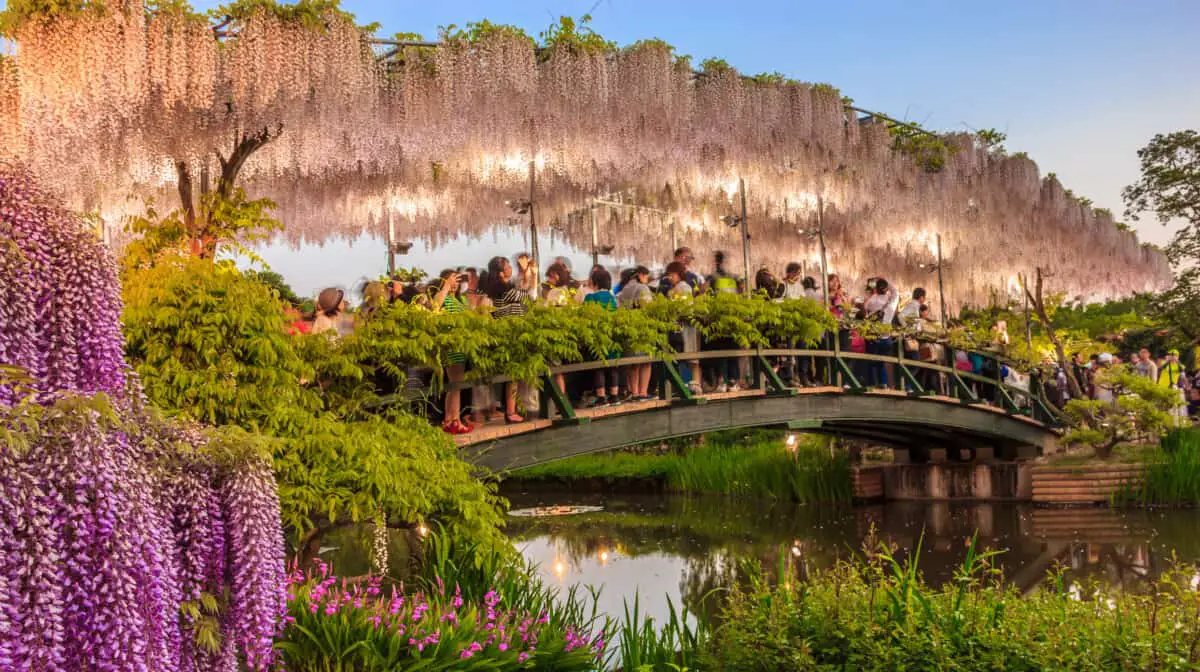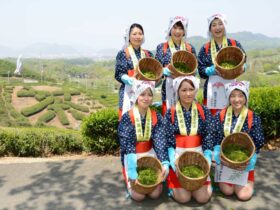Japan has some of the most beautiful flowers and gardens in the world. They have different fragrances, colors, and spiritual meanings. Many gardens are carefully cultivated with magnificent shrubs, vines, and blooms filled thru the spring, summer, and fall, and even a few bloom in winter.
One of the most important flowers is the Hasu, or Lotus, which is a Buddhist symbol of enlightenment. Although it grows in a distressing environment, it is a beautiful flower.
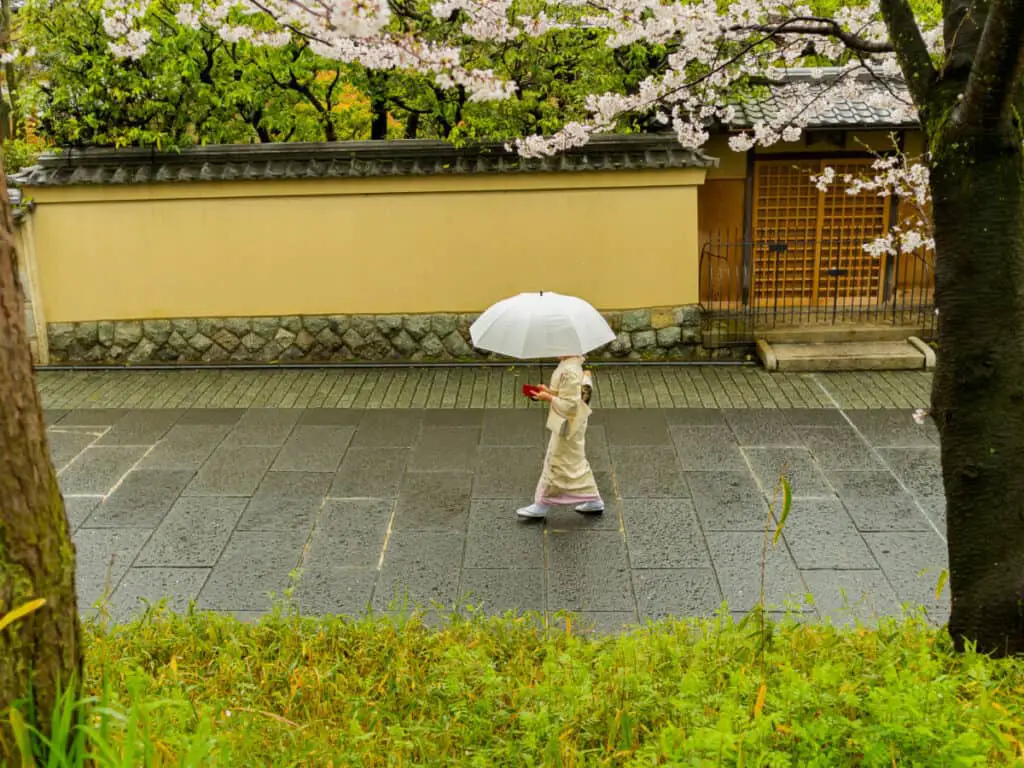
There are many flowers in Japan that are both spiritual and beautiful, like the lotus. Every flower has its own value in Japan but there are ten flowers because of their beauty and aromas that can be considered the top ten in Japan.
Top 10 Flowers in Japan
Japan is known for its vibrant flowers. Flowers are celebrated year-round in Japan because of their seasonal blooming.
Each season brings thousands of new flowers across each region of Japan, which means frequent traveling and new views no matter where you are.
- Cherry Blossom (Sakura)
- Lotus (Hasu)
- Sunflower (Himawari)
- Lavender (Rabenda)
- Plum Blossoms (Ume)
- Cosmos (Kosumosu)
- Japenese Daffodils (Suisen)
- Japanese Iris (Hanashobu)
- Wisteria (Fuji)
- Hydrangea (Ajisai)
The blooming of these many flowers is accompanied by large celebrations and festivals, like the annual Fuji Shibazakura Festival.
Sakura
The sakura flower is one of the most famous flowering trees in Japan. The tree is dark brown, with bright pink flowers that bloom between late March and early April.
Also known as the cherry blossom tree, the peaceful sakura is an iconic part of Japanese culture. It is recognizable on artwork and celebrated in many rituals and yearly celebrations, including the hanami celebration.
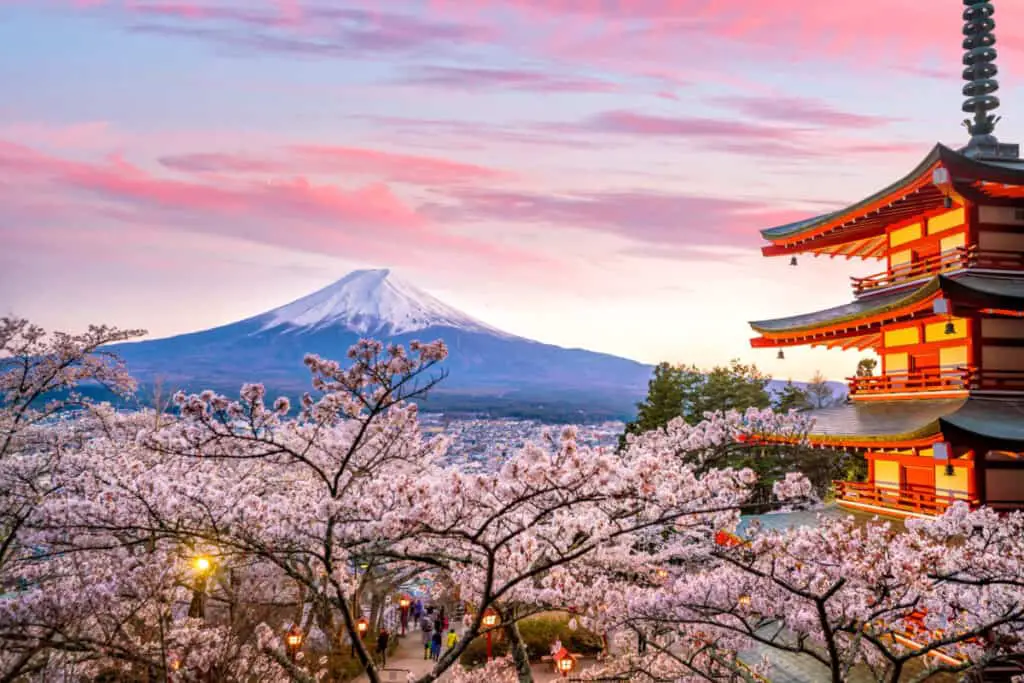
During the spring hanami celebration, people sit under the sakura trees and partake in a cherry blossom flower viewing. As people view these flowers, they welcome spring with humility and the acceptance that it will soon pass by.
Despite a heavy obsession with this bright pink springtime flower, the sakura is the second flower blooming in springtime. The first flower to bloom is the plum blossom, which blooms in February. Although people celebrate its blooming, true hanami celebrations do not begin until cherry blossoms begin to bloom.
Lotus
The lotus flower also called hasu in Japanese, is another one of the most famous Japanese flowers. The beautiful summer flower has pink petals, which are highly fragrant. The season for lotus flowers lasts from Mid-July to mid-August.
Lotus flowers bloom in wet weather conditions like no sunlight and muddy waters. They are typically found near ponds, temples, and shrines.
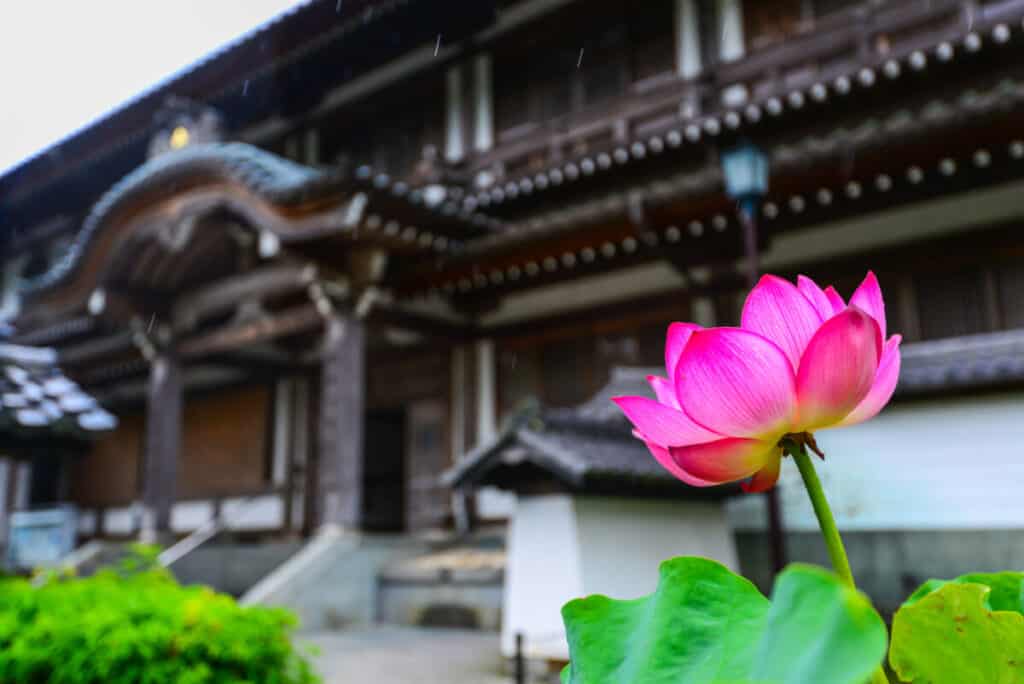
According to the Institute for Asia and Asian Diasporas, the lotus flower has a specific representation in the Buddhist religion. They symbolize purity and enlightenment, which all Buddhists may reach with spiritual dedication. The lotus flower, which grows in harsh wet terrain, is symbolic of overcoming difficult times.
Sunflowers
The Himawari, also known as the sunflower, is one of Japan’s most popular summer flowers. These summer flowers grow in massive fields from July to August. Cities and towns across Japan hold festivals to celebrate the yearly bloom.
In Japan, the sunflower symbolizes loyalty and adoration so it is unsurprising that someone would give their loved one a sunflower as a sign of affection. In love, this bright-colored flower indicates long-lasting, strong relationships.
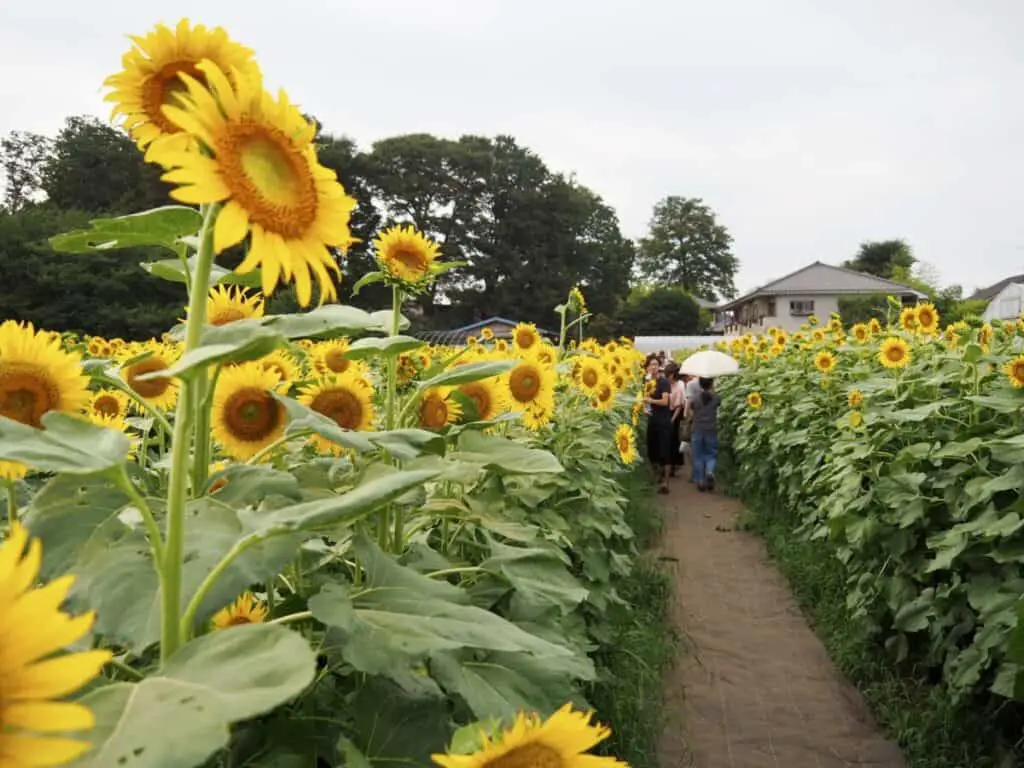
Many of the sunflower fields are in clear view of Mount Fuji, which is nearly snowless during late summer. The weather of summertime Mt. Fuji is drastically different than winter or spring. Some people take the opportunity to hike or visit nearby flower fields for a different experience.
The annual sunflower festivals are drastically different than hanami celebrations, where people view the blooming cherry blossoms.
During summertime sunflower festivals, celebrations of the blooming sunflowers involve interactive festivities like mazes.
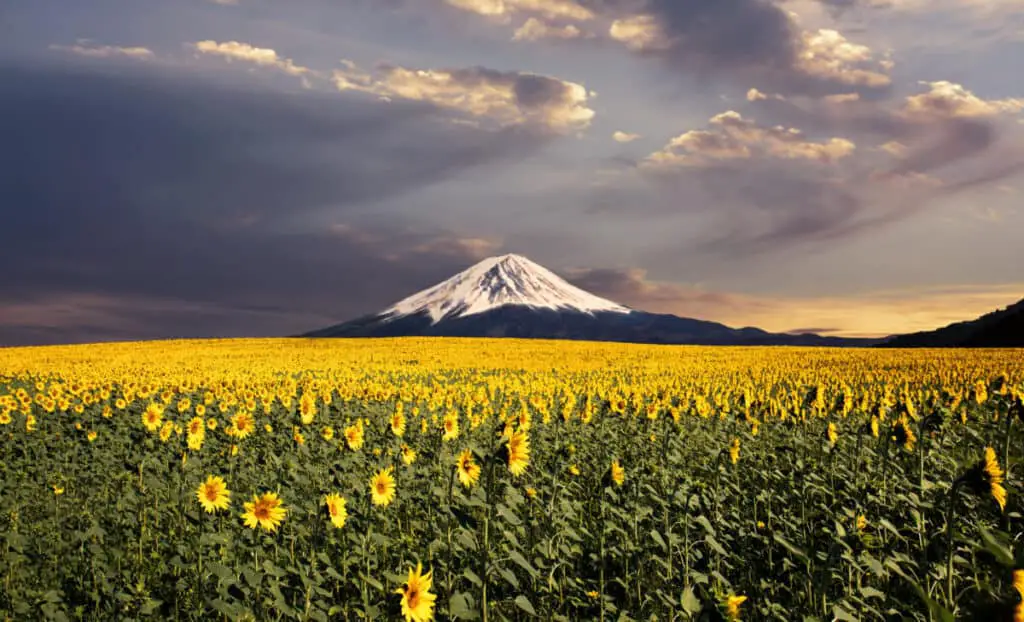
Hokkaido is one of the most well-known locations for viewing sunflowers in Japan. The large-scale bloom makes it a popular tourist attraction. Many people are drawn here from across the globe and large events and festivities are held to accommodate its popularity.
Lavender
Japanese lavender is a famous flower in Japan because of its beauty and fragrance. Visiting some of the many flowers while it is in bloom between early July and early August. The pleasant weather makes it favorable to explore large lavender fields in the summertime.
Annual events are held each year so people may enjoy the aroma of lavender in one of the largest lavender gardens near Lake Kawaguchi.
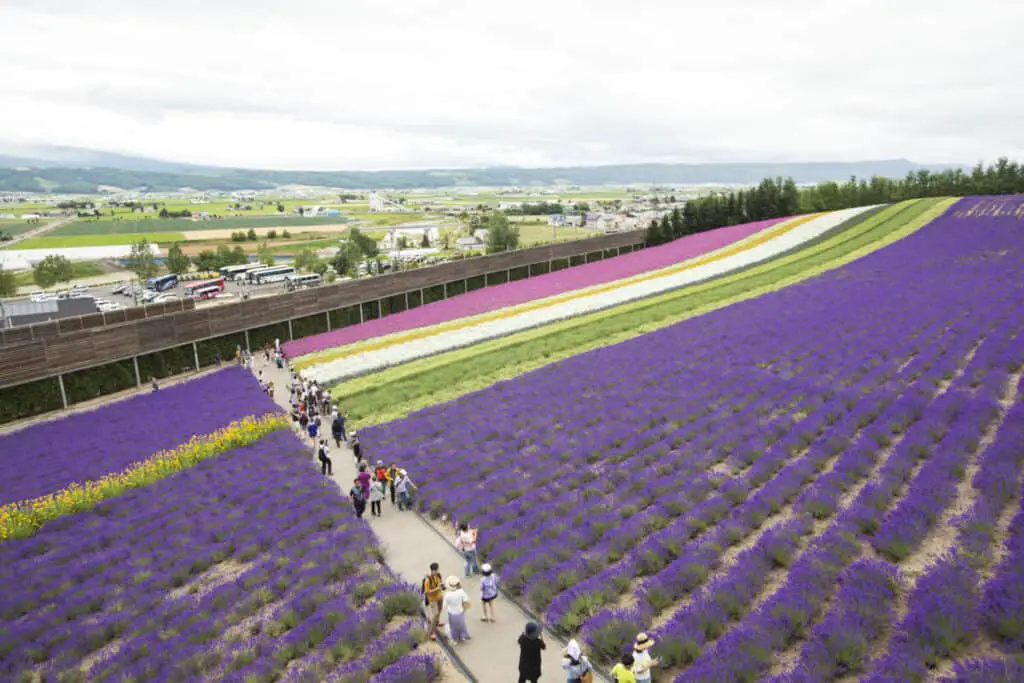
The public can roam the fields of Yagizaki Park and enjoy the sweet smell of lavender along with the views of scenic Mount Fuji in the background.
Because of their ample lavender production, Japan is one of the only competitors in lavender production. Visiting some of the many lavender fields gives insight into how much lavender agriculture Japan produces.
Plum blossoms
Plum blossoms are the first flower to bloom during spring. These flowers, which sprout on plum trees, are cherished flowers in Japan because they symbolize the beginning of spring. They are not as popular as the sakura. However, they are still celebrated during hanami festivals.
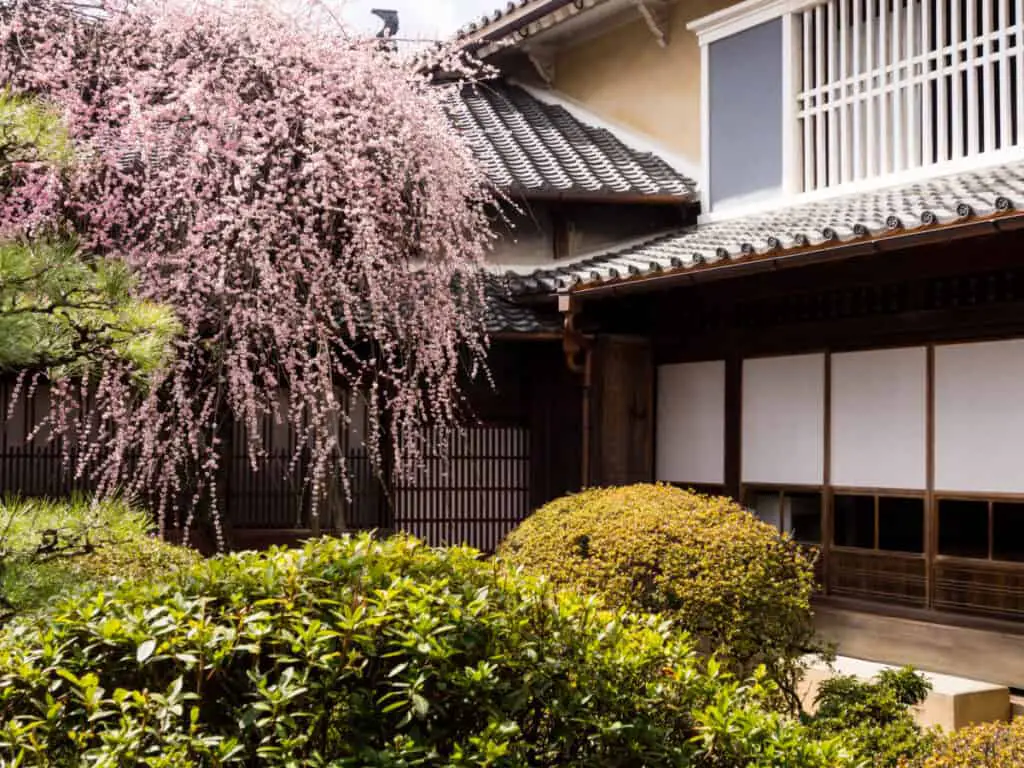
The appearance of plum blossoms is very similar to cherry blossoms. Plum blossoms are bright pink, with several long yellow pistols.
The main difference between the plum blossom and the sakura is the interior color of the flower. The plum blossom appears yellow/orange on the inside. Cherry blossoms are pink with pink on the inside. Both flowers have several long, yellow pistols.
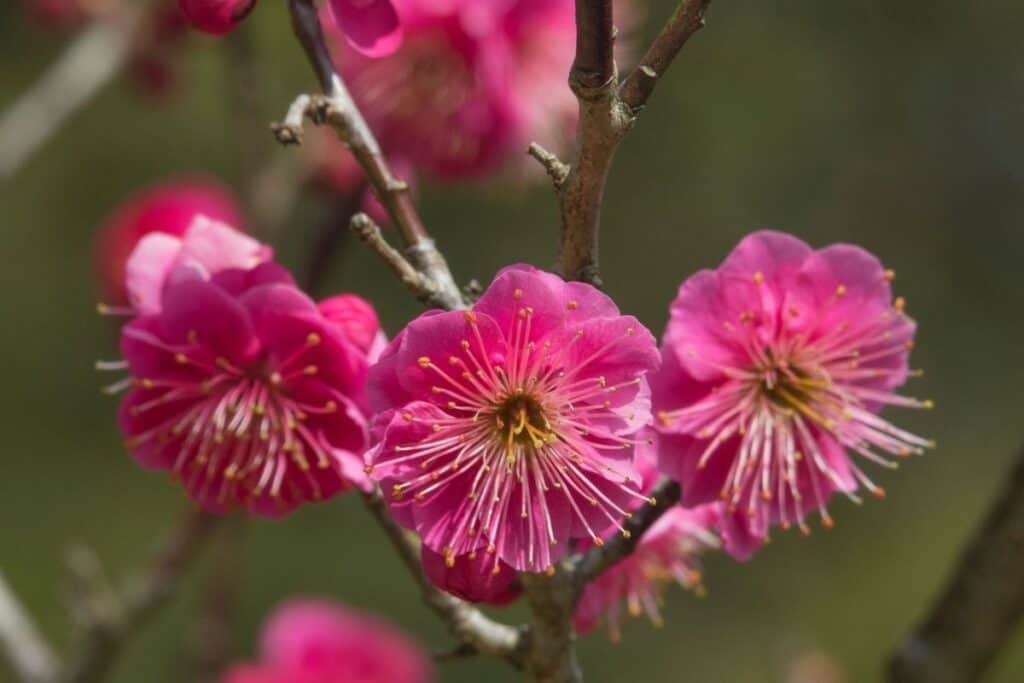
The plum blossom is also called an ume in Japanese. The ume blooms in early February through mid-March. The blooming period is short but it is an effective way to welcome the springtime.
Cosmos
The kosumosu is most commonly known as the cosmo. These colorful flowers appear in Japan in autumn and come in a variety of colors. Some of the most common colors are white, red, and yellow. As they grow near each other, the flowers cross-contaminate to create unique colors like pink, orange, and more shades.
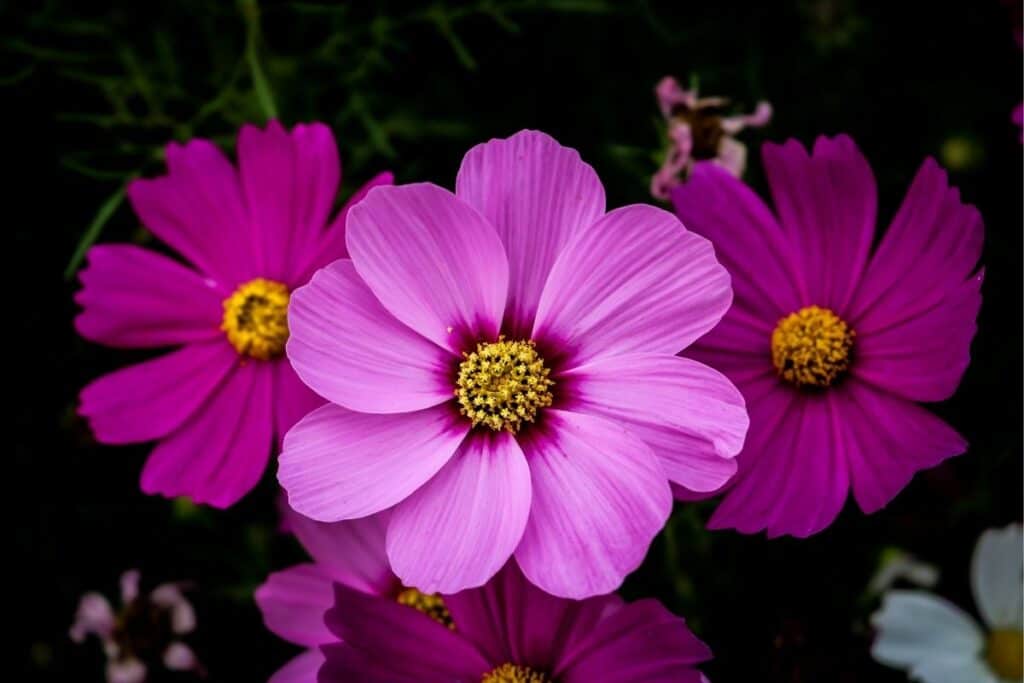
The large range of color varieties makes the different cosmos stand out beautifully against each other. The many colors also make the cosmos one of the most celebrated flowers in Japan.
The Japanese Daffodil
Japenese daffodils are one of the most popular winter flowers. These flowers are soft, pastel yellow. Many paintings and early pieces of woodblock art feature these beautiful flowers because of how delicate they appear.
The Japanese daffodil blooms in many parks across Tokyo from December to January. So, it is likely that you will encounter these delicate yellow flowers even in the city.
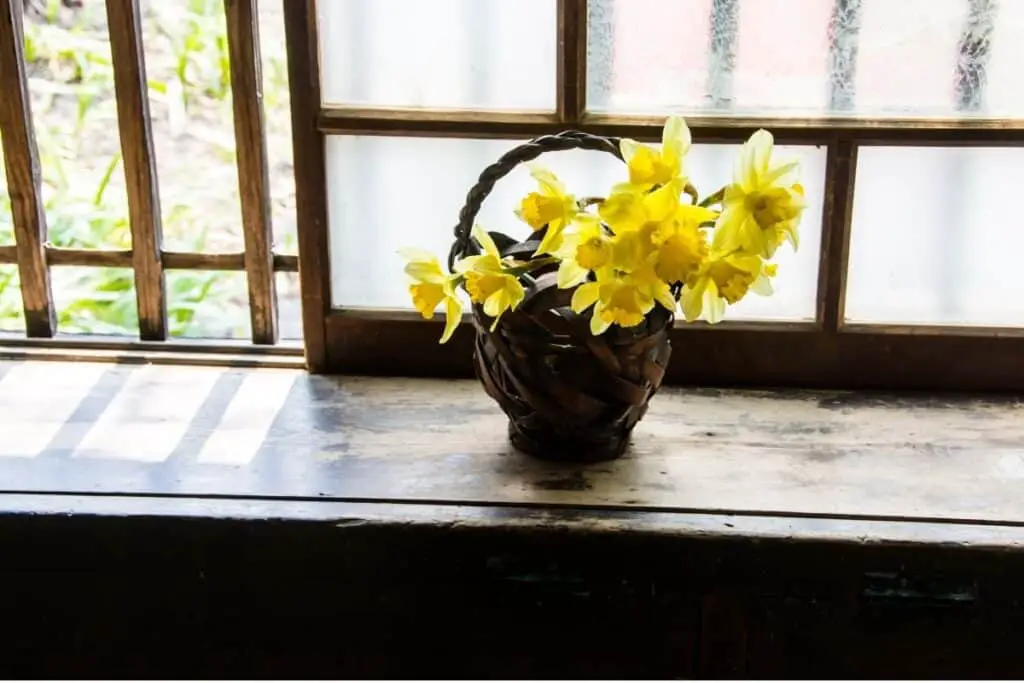
Japanese Iris
The vibrant purple summertime flower, the hanashobu, blooms every summer between May through July. These beautiful flowers grow alongside river banks, ponds, and other bodies of still water.
They come in several shades of purple, with yellow and white interiors that may sometimes resemble faces.
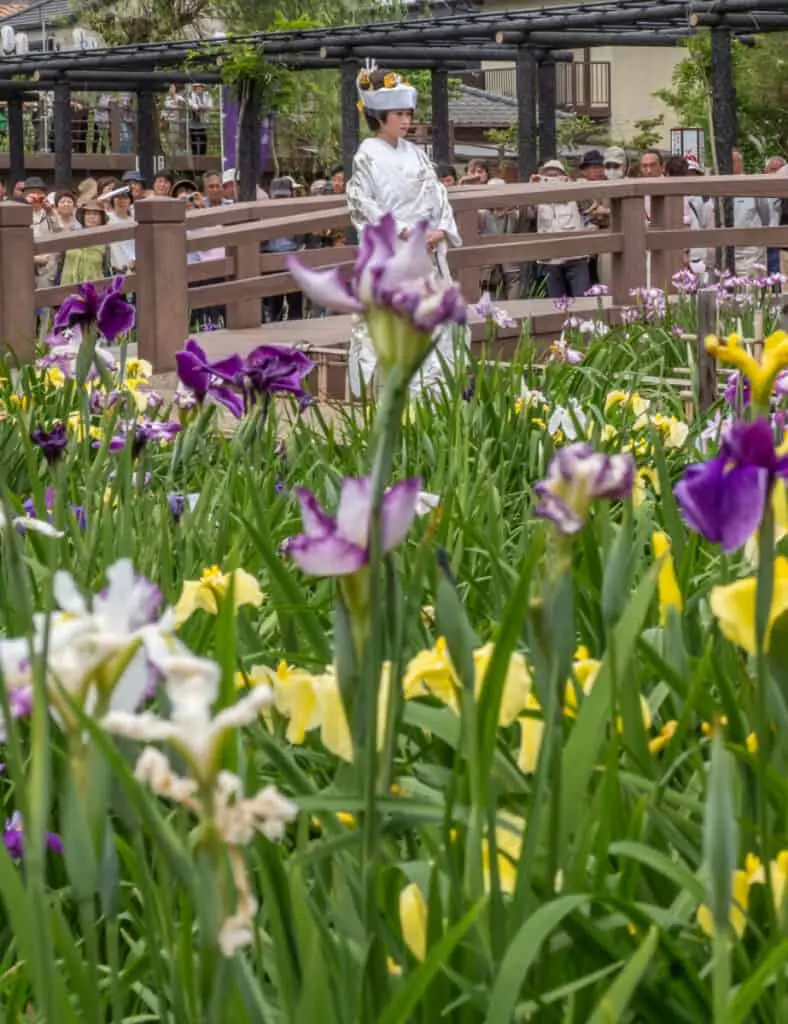
Also known as the Japanese Iris, this flower is celebrated during the annual Iris Festival. The festival is held at Sugio Itako Iris Park from the end of May to the end of June, where people may observe a variety of Irises.
It is formally known as the Suigo Itako Iris Festival because of the location.
Wisteria
Wisteria plants are stunning Japanese plants, also known as the fuji. These plants produce fifty-centimeter tresses of flowers, which dangle beautifully from their vines.
Each spring around late April and early May, Wisteria plants produce around one hundred bright purple or dark blue flowers on each vine.
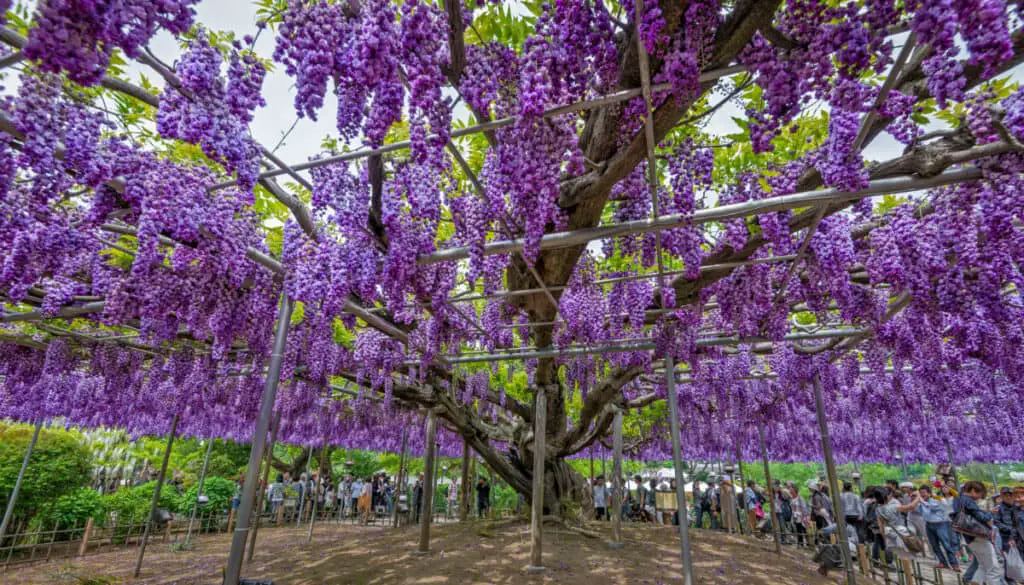
These plants require large amounts of the sun for maximum blooms, which is why they climb so high. They often cover the roofs of temples or trellises in outdoor gardens. Wisteria flowers are also known to grow along the sides of buildings and in fences.
This species is native to Japan, representing immortality because of the way this plant can thrive against the odds of a harsh environment. Wisteria flowers also represent love and sensuality because of their soft, purple color.
Hydrangea
If you hear something mention ajisai season, they probably mean the hydrangeas are in bloom. Ajisai is another word for hydrangea.
These beautiful flowers bloom during the peak wet season of summer between mid-June and mid-July. Hydrangeas are popular among temples and have numerous festivals dedicated to their name.
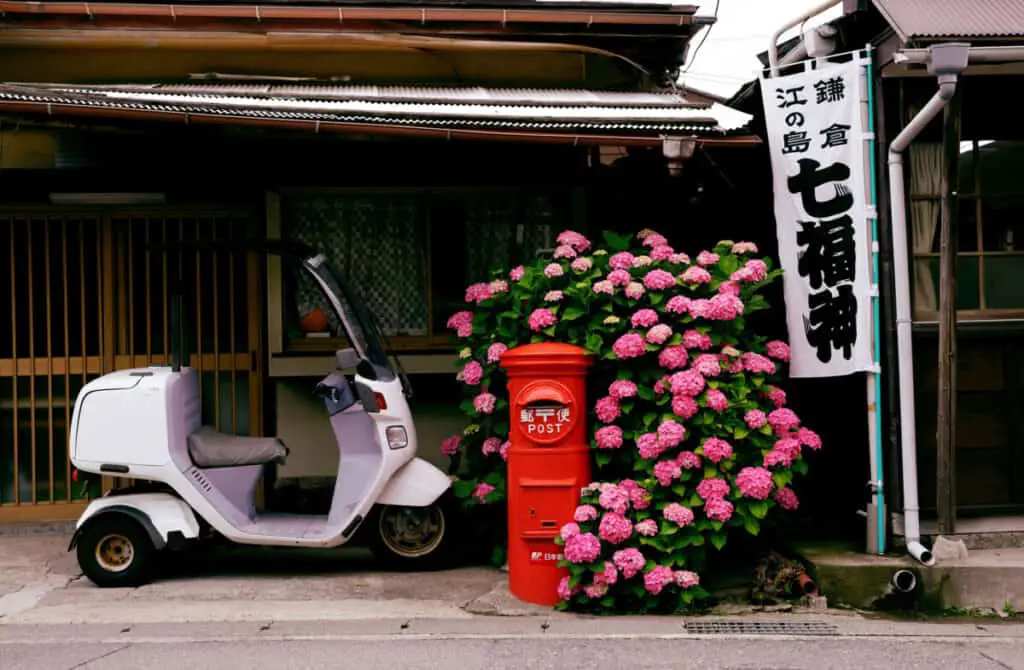
Hydrangeas grow across the world. However, there are species that are native to Japan. This species is sky blue and used to make sweet tea called hydrangea Serrata.
The hydrangea has several symbolic meanings in Japan. They are famous for emerging during the rainy season, which is symbolic of triumph. After a long rain, a beautiful hydrangea will always emerge.
According to many Japanese traditions, this is also true about people who endure struggle. At the end of all struggle is a beautiful result.

